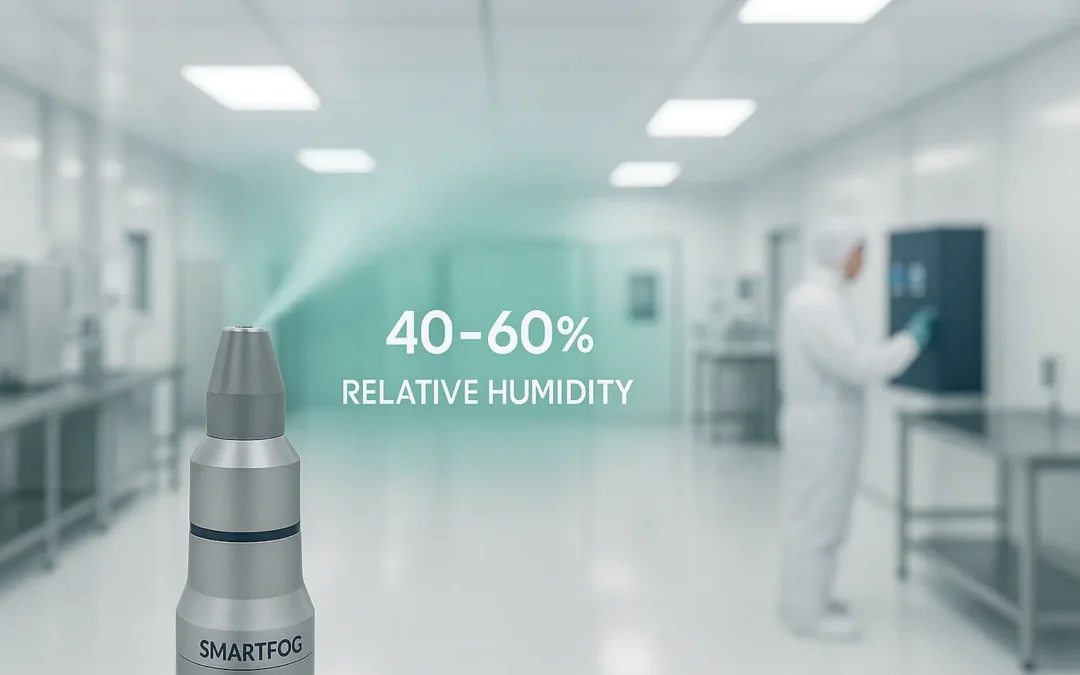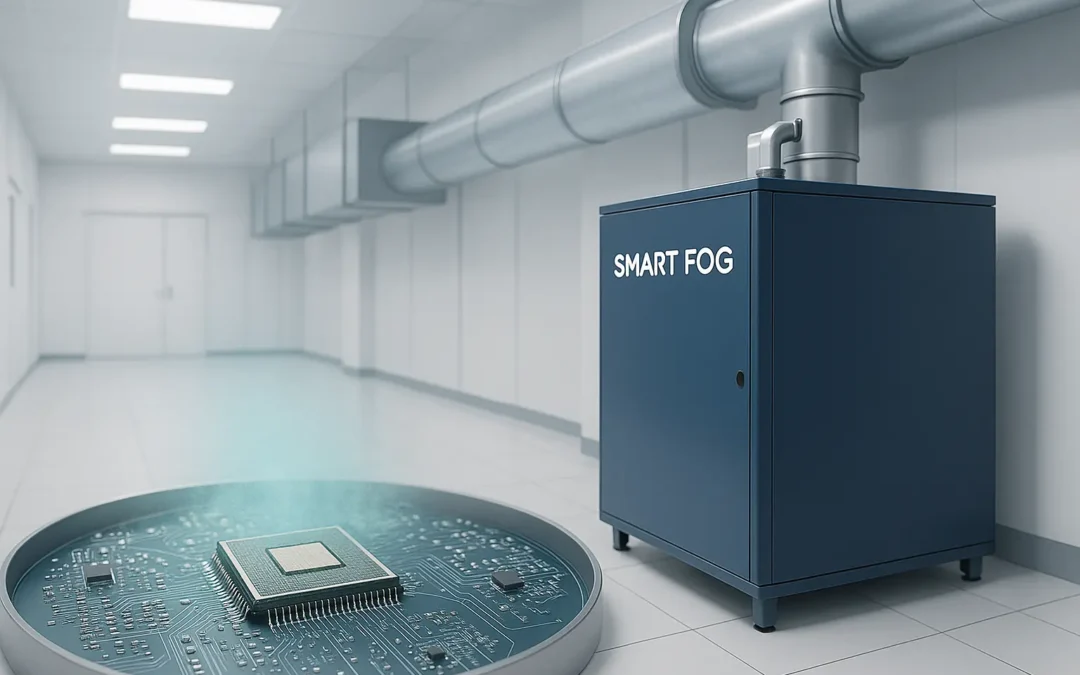Proper humidity management is essential for successful greenhouse cultivation. Maintaining the right humidity levels helps create the ideal environment for healthy plant growth, reduces stress on plants, and maximizes crop yields. While excessive humidity can promote disease, insufficient humidity can also negatively affect plant development, especially for tropical and moisture-loving plants.
Modern humidity control systems for greenhouses focus on maintaining balanced moisture levels, often emphasizing humidification to increase humidity during dry periods or in dry climates. Whether you’re managing a small hobby greenhouse or a large commercial operation, understanding humidification techniques and equipment is crucial for creating a thriving greenhouse environment.
In this comprehensive guide, we’ll explore everything you need to know about greenhouse humidification systems, from basic concepts to advanced automation technologies. You’ll discover how to select the right humidification system for your specific needs, understand installation requirements, and learn maintenance best practices that ensure optimal performance for years to come.
Understanding Greenhouse Humidification Systems
Humidification systems for greenhouses are designed to add moisture to the air, ensuring humidity levels remain within the optimal range for plant growth. Most crops thrive in relative humidity levels between 50-70%, but tropical plants and certain sensitive species may require even higher levels. Maintaining the right humidity helps plants transpire properly, supports nutrient uptake, and prevents stress caused by dry air.
Humidification systems work by introducing water vapor or fine mist into the greenhouse atmosphere. These systems can be standalone or integrated with other climate control components such as temperature control, ventilation, and lighting to create a comprehensive environment management solution.

Types of Greenhouse Humidification Systems
There are several types of humidification systems available, each suited to different greenhouse sizes, climates, and crop requirements.
Misting and Fogging Systems
Misting and fogging systems use ultra-fine water droplets to increase humidity while providing a cooling effect. These systems can lower temperatures in the greenhouse by 10-20°F, which is especially beneficial in dry climates or during hot summer months. The water droplets evaporate quickly, raising humidity without wetting the plants excessively, reducing the risk of fungal diseases.
Fogging systems often incorporate automated controls that adjust misting frequency based on real-time humidity and temperature sensor data. This ensures the greenhouse maintains the desired environment without wasting water or energy.
Ultrasonic Humidifiers
Ultrasonic humidifiers use high-frequency vibrations to create a fine mist of water particles. These systems are energy-efficient and provide precise humidity control, making them ideal for small to medium-sized greenhouses or propagation areas. Their quiet operation and minimal water usage make them popular in hobbyist setups.
Steam Humidifiers
Steam humidifiers generate humidity by boiling water and releasing steam into the greenhouse. They provide rapid and consistent humidification, making them suitable for larger commercial greenhouses. Steam systems can be integrated with heating systems, offering dual benefits of warming and humidifying the greenhouse environment. To learn more about the benefits of steam humidifiers, visit this page.
Evaporative Humidifiers
Evaporative humidifiers increase humidity by passing air over a wet medium, such as a wick or pad, allowing water to evaporate into the air stream. These systems are simple, reliable, and effective in dry climates. They can be combined with ventilation and cooling systems to balance temperature and humidity simultaneously.
Benefits of Proper Greenhouse Humidification
Maintaining optimal humidity levels through effective humidification systems offers numerous benefits:
- Improved Plant Growth: Adequate humidity supports transpiration and nutrient uptake, promoting faster growth and higher yields.
- Reduced Plant Stress: Stable humidity levels prevent stress caused by dry air, which can lead to wilting, leaf damage, and poor flowering.
- Disease Prevention: Proper humidification reduces the risk of certain diseases by avoiding overly dry conditions that can weaken plants.
- Energy Efficiency: Modern automated humidification systems optimize water and energy use, reducing operational costs.
- Enhanced Worker Comfort: Humidification combined with cooling can create a more comfortable environment for greenhouse workers.
Automated Control and Monitoring Technologies
Advanced humidification systems integrate sensors and automation to maintain precise humidity levels. Environmental control computers allow growers to program desired humidity setpoints and adjust humidification equipment automatically. Wireless sensor networks monitor humidity across multiple greenhouse zones, ensuring uniform conditions throughout the growing space.
Mobile apps and remote monitoring systems provide real-time humidity alerts and adjustments from anywhere with internet access. Growers can monitor greenhouse conditions, receive alarms for equipment failures or out-of-range conditions, and make adjustments remotely. Data logging capabilities track humidity patterns over growing seasons, providing valuable insights for optimizing production schedules and equipment operation.
Integration with Climate Control Systems
Humidification works best when coordinated with other greenhouse climate control components:
- Temperature Control: Humidification systems are often integrated with heating or cooling systems to maintain the ideal temperature range alongside optimal humidity.
- Ventilation: Proper ventilation helps distribute humidified air evenly and prevents stagnant air pockets.
- Lighting and Shade Cloth: These factors influence plant transpiration and humidity needs; shade cloth can reduce heat and light intensity, impacting humidity requirements.
- Irrigation: Smart irrigation controllers adjust watering schedules based on humidity levels, preventing overwatering and root diseases.
Selecting the Right Humidification System
Choosing the appropriate humidification system depends on factors such as greenhouse size, crop type, local climate, and budget. Smaller greenhouses may benefit from ultrasonic or misting systems, while larger commercial operations often require steam or fogging systems with automated controls.
Consider crop-specific requirements, as tropical plants often need higher humidity levels than Mediterranean or desert species. Climate zone also plays a role; dry climates require more robust humidification, whereas humid regions may only need occasional moisture supplementation.
Installation and Maintenance Requirements
Proper installation is essential for system efficiency and longevity. Humidification equipment requires adequate water supply, drainage, and electrical connections. Automated systems should be calibrated regularly to ensure sensors and controllers function correctly.
Routine maintenance includes cleaning nozzles and filters to prevent clogging, inspecting water quality to avoid mineral buildup, and checking for leaks or malfunctions. Seasonal adjustments may be necessary to align with changing outdoor conditions and crop growth stages.
Maximizing Success with Proper Humidification
Effective humidification is a key component of successful greenhouse operations. By understanding your specific humidity needs and selecting the right system, you can create a healthy growing environment that supports vigorous plant growth and maximizes yields.
Advances in sensor technology and automation continue to improve humidification precision and energy efficiency. As climate variability increases, reliable humidification becomes even more important for maintaining consistent production regardless of outside weather conditions.
Whether you manage a small hobby greenhouse or a large commercial facility, investing in proper humidification systems provides the foundation for thriving plants and successful harvests. With careful planning, installation, and maintenance, you can harness the benefits of optimal humidity to grow plants that flourish in any climate.





